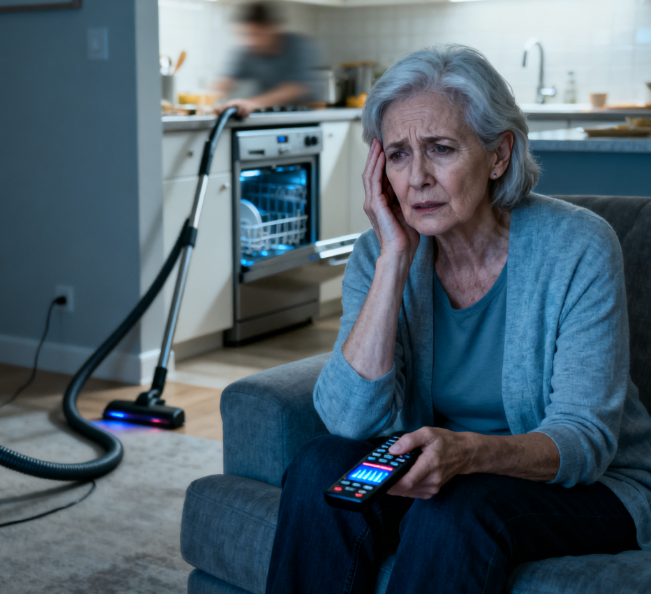
This Household Sound Could Be Damaging Your Hearing… See More
It happens multiple times daily in most American homes. You press a button, and a familiar whirring fills the air—a sound so common you barely notice it anymore. You might even find the noise comforting, a signal that chores are being accomplished. But what if this everyday household sound was quietly damaging your hearing? What if the appliances you rely on to maintain your home and prepare your meals were gradually stealing your ability to hear clearly?
The culprit isn’t what you’d expect. It’s not the blaring television, the occasional shouted conversation, or even the neighborhood lawn care equipment. The most damaging household sound might be coming from your kitchen—specifically, your blender, food processor, or even your coffee grinder.
These seemingly harmless appliances can generate noise levels between 85 and 95 decibels—equivalent to standing near a motorcycle revving its engine or being in a crowded restaurant during peak hours. While brief exposure might seem insignificant, regular use without hearing protection can cause cumulative damage over time. The high-frequency nature of motor sounds from these devices is particularly damaging to the delicate hair cells in your inner ear responsible for transmitting sound signals to your brain.
What makes this especially concerning for older adults is that age-related hearing loss (presbycusis) already affects approximately one in three people between ages 65 and 74. Adding daily noise exposure from household appliances accelerates this natural decline, potentially robbing you of precious hearing capacity that could have been preserved.
The danger lies in the deceptive nature of these sounds. Unlike obviously dangerous noises like jackhammers or rock concerts, household appliance noises feel familiar and safe. You wouldn’t stand next to a construction site without ear protection, but you might happily operate your blender for minutes at a time without considering the consequences.
Other household offenders include vacuum cleaners (75-85 decibels), hair dryers (80-90 decibels), and even some washing machines or dishwashers that can reach 70-80 decibels during spin cycles. While individually these might not seem extreme, the cumulative effect throughout the day—and across years—adds up to significant hearing damage.
The signs of noise-induced hearing loss are often subtle at first. You might find yourself asking people to repeat themselves more frequently, particularly in noisy environments. Television volumes might creep upward without you noticing. Certain consonant sounds—especially “s,” “f,” and “th”—might become harder to distinguish. Many people mistake these early signs for normal aging rather than preventable damage.
The social consequences of hearing loss extend far beyond missing parts of conversations. Research has linked untreated hearing loss to social isolation, depression, and even cognitive decline. The mental effort required to decipher incomplete sounds can overwhelm the brain, leaving less capacity for memory and other important functions.
The good news is that protecting your hearing is remarkably simple. For loud appliances like blenders or food processors, consider wearing basic ear protection—even simple foam earplugs can reduce noise exposure by 20-30 decibels. Stand farther away from operating appliances, since sound intensity decreases significantly with distance. Limit usage time by preparing ingredients in batches rather than multiple short sessions.
When purchasing new appliances, look for noise ratings—many manufacturers now list decibel levels alongside other specifications. Some newer models are specifically designed to operate more quietly. For particularly loud tasks like vacuuming, consider doing them when other household members are present rather than alone, reducing the temptation to remove hearing protection to hear the doorbell or telephone.
Regular hearing check-ups are as important as vision or dental exams, particularly if you’re frequently exposed to household noises. Baseline testing helps track changes over time and identifies problems early when interventions are most effective.
Your hearing is a precious resource that connects you to loved ones, entertainment, and the world around you. Protecting it doesn’t require drastic lifestyle changes—just greater awareness of the hidden dangers in your daily environment and simple precautions to preserve your hearing for years to come. After all, the sounds you protect today are the conversations you’ll enjoy hearing tomorrow.